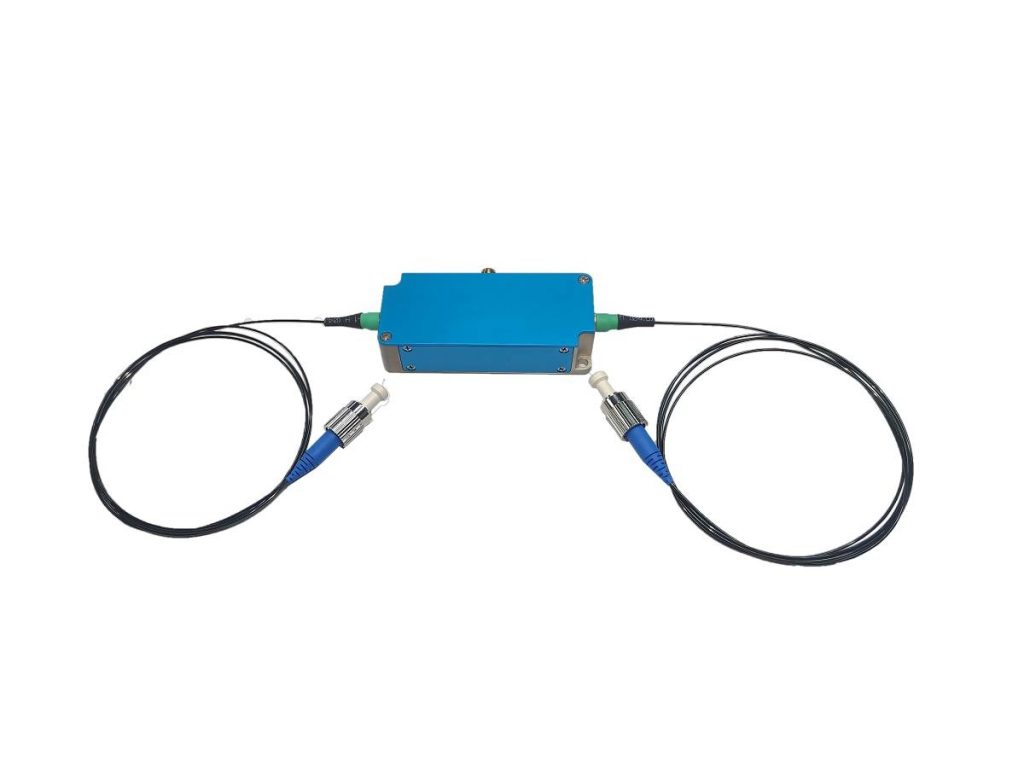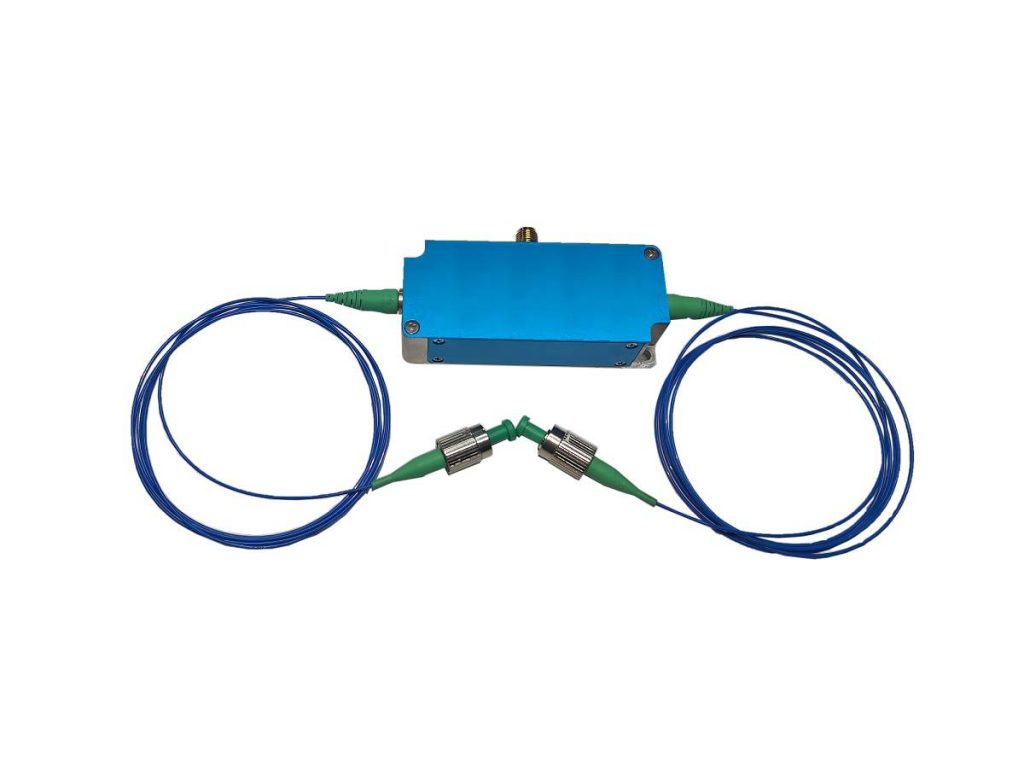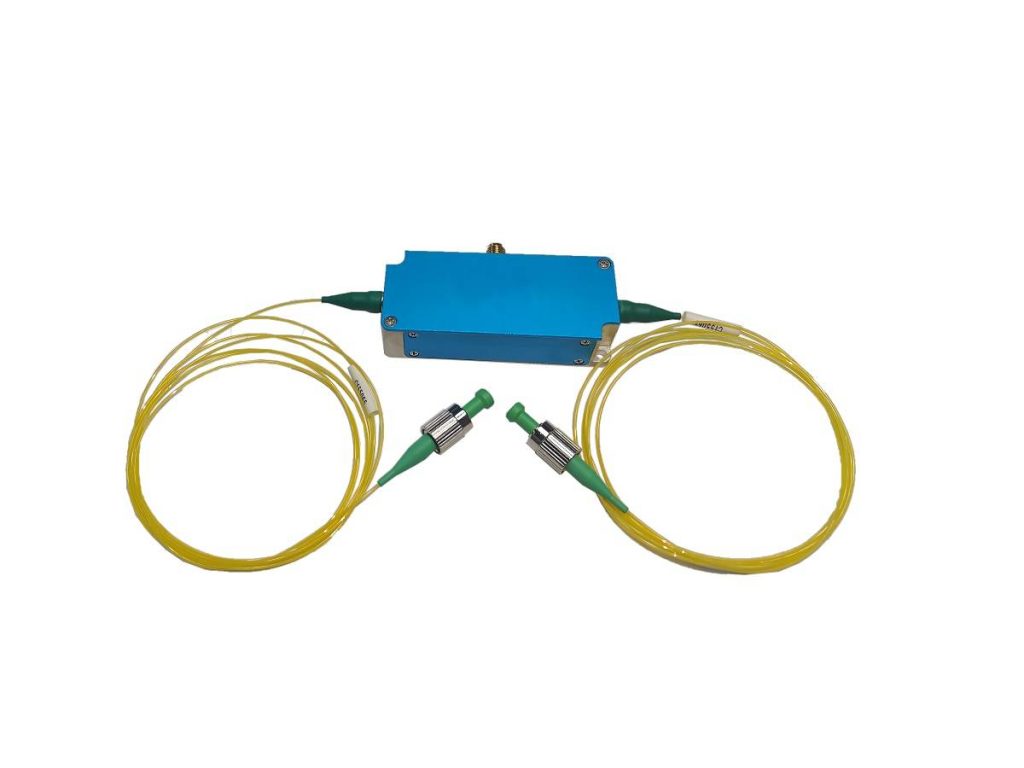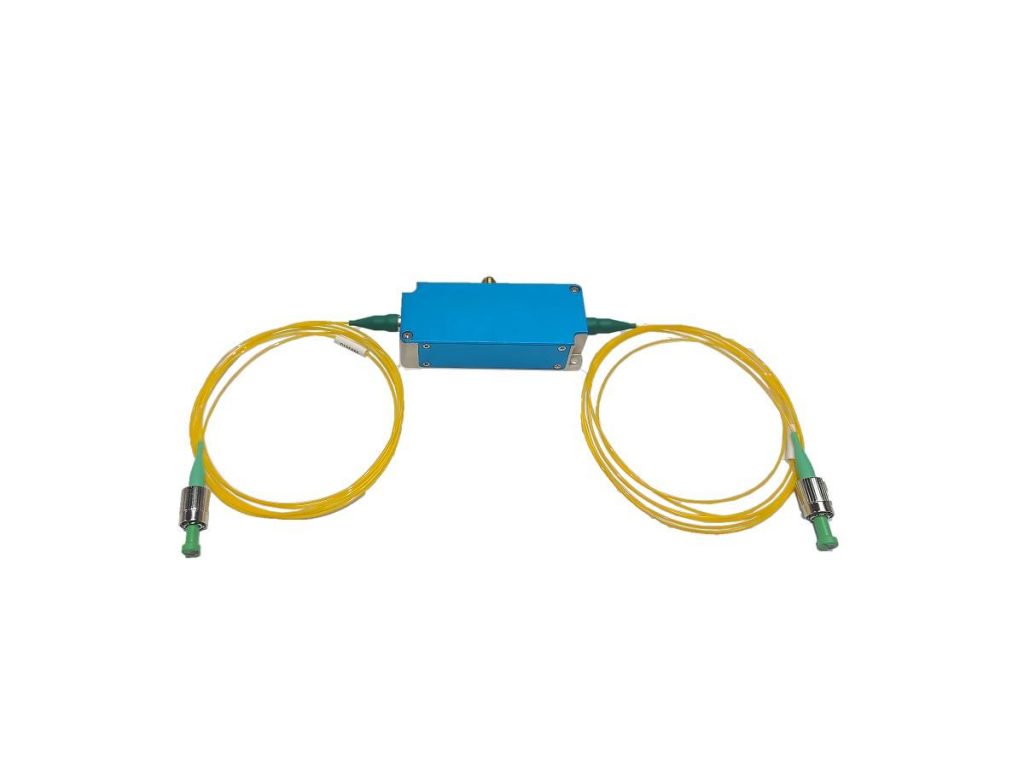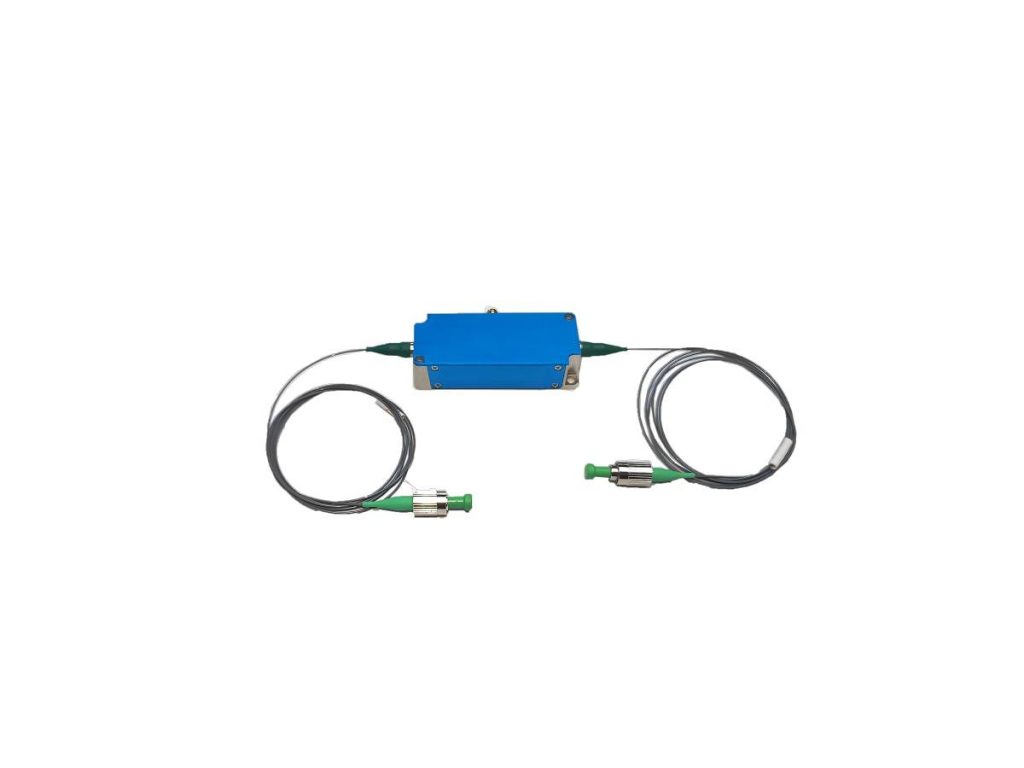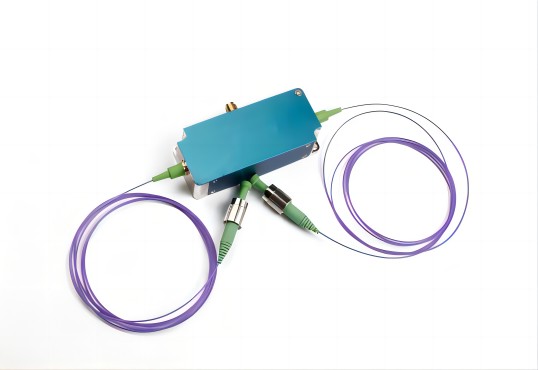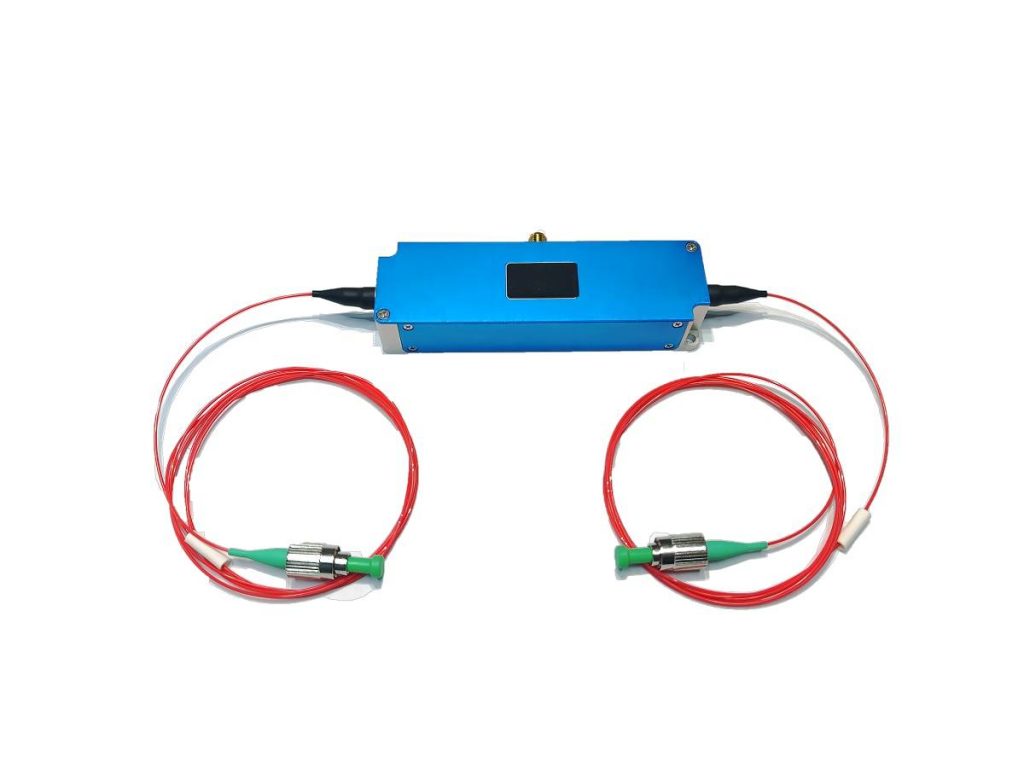Acousto-Optic Modulators: Deflection and Frequency Shifting
Light and sound, seemingly disparate phenomena, can interact in fascinating ways. Acousto-optic modulators exploit this interaction to manipulate light using sound waves. This article delves into the principles behind acousto-optic modulators, focusing on two key functionalities: beam deflection and frequency shifting. We will explore how acousto-optic modulators work, their various applications, and the key distinctions between acousto-optic deflectors and acousto-optic frequency shifters (AOFS).
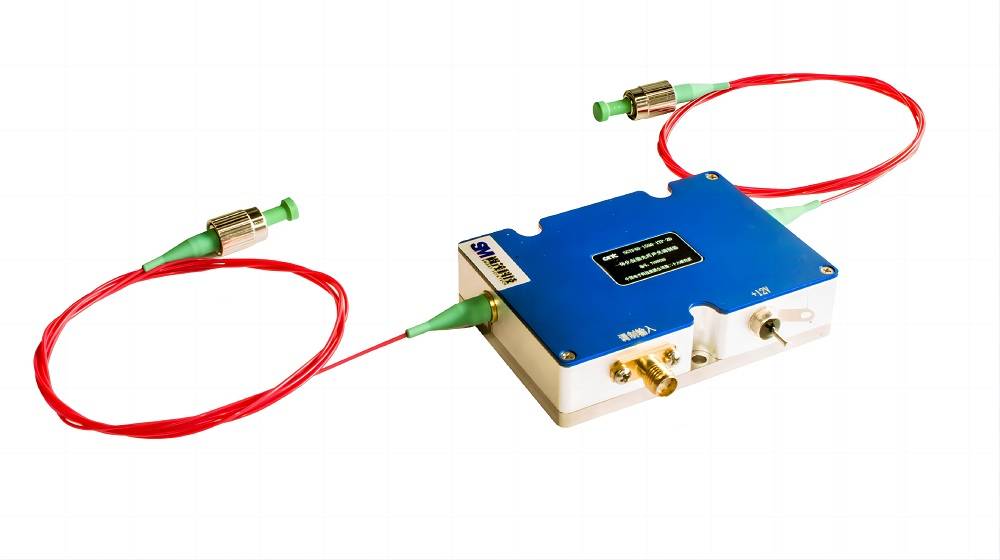
What are Acousto-Optic Modulators?
Light, an electromagnetic wave, propagates through space at a constant speed. Sound, on the other hand, is a mechanical wave that requires a medium for its propagation. When light and sound interact within a material, the refractive index (a material’s property that influences light propagation) can be altered by the presence of sound waves. This phenomenon, known as the acousto-optic effect, forms the basis for acousto-optic modulators.
Acousto-optic modulators utilize sound waves to control the properties of a light beam. These devices typically consist of a transparent crystal (such as tellurium dioxide or lithium niobate) and a piezoelectric transducer. The transducer converts an electrical signal into a sound wave, which propagates through the crystal. When a light beam interacts with the sound wave within the crystal, its path is influenced, leading to deflection or frequency shifting.
What are Acousto-Optic Deflectors?
What is the Acousto-Optic Deflector Working Principle?
The core principle behind acousto optic deflectors involves the creation of a dynamic diffraction grating using sound waves. A diffraction grating is a periodic structure that scatters light in multiple directions. In an acousto optic deflector, the sound wave acts as this dynamic grating. As the sound wave propagates through the crystal, it creates regions of alternating compression and rarefaction in the material. These variations in density cause a periodic modulation of the refractive index, essentially forming a moving diffraction grating within the crystal.
When a light beam interacts with this moving grating, it diffracts in specific directions. The specific diffraction angle depends on the wavelength of the light beam (λ), the acoustic wave’s wavelength (Λ), and the order of diffraction (m, an integer representing the diffracted beam). This relationship is governed by Bragg’s diffraction equation:
sin(θ) = mλ / (2Λ)
Here, θ represents the diffraction angle. By controlling the frequency of the acoustic wave (which determines the Λ value), the acousto optic deflector can precisely control the diffraction angle of the light beam.
The electrical signal driving the piezoelectric transducer determines the frequency of the sound wave. Varying the electrical signal’s frequency modulates the acoustic wave’s wavelength, consequently altering the diffraction angle of the light beam. This allows for the precise steering of the light beam within a specific angular range.

Applications of Acousto Optic Deflectors
Acousto optic deflectors offer a versatile tool for manipulating light beams, leading to various applications across different fields:
- Beam Steering and Laser Scanning: Acousto optic deflectors can be used to rapidly deflect a laser beam across a specific range of angles. This functionality is crucial in laser scanning systems, where the beam needs to be directed across a designated area for applications like object inspection, material processing, and barcode reading.
- Pulse Picking: Acousto optic deflectors can act as optical switches, allowing for the selection of specific pulses from a continuous train of laser pulses. This capability is beneficial in applications like high-speed optical communication systems and laser material processing, where precise control over individual pulses is essential.
- Modulation: By rapidly changing the acoustic wave’s frequency, acousto optic deflectors can modulate the intensity of the light beam. This allows for applications like controlling light intensity in laser displays and creating variable optical attenuators.
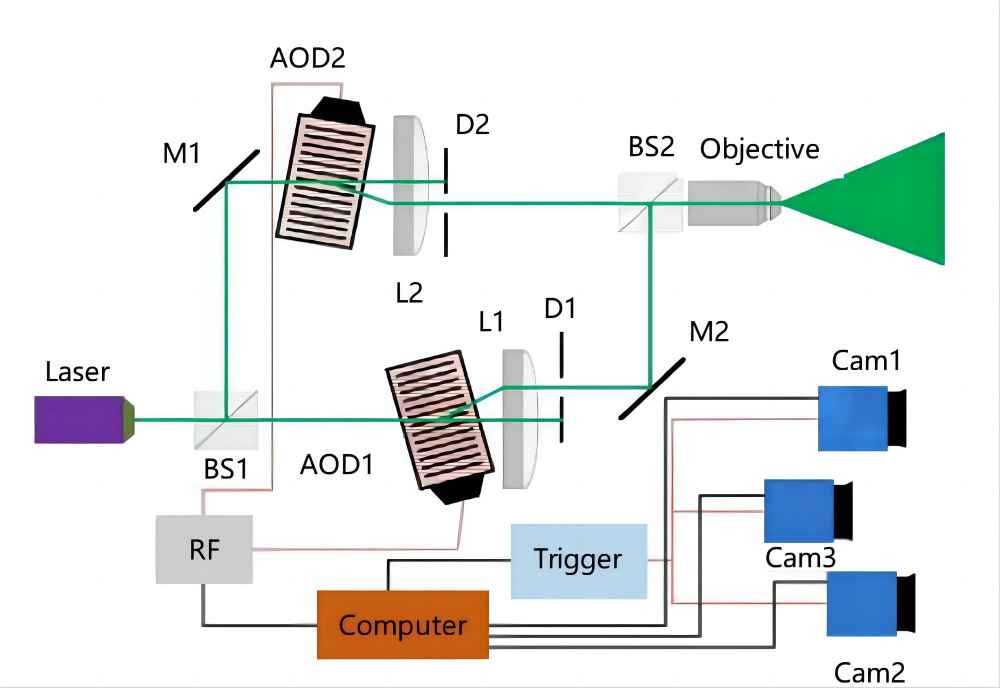
Acousto-Optic Frequency Shifter (AOFS)
The Relationship Between Acousto Optic Frequency Shifter and Acousto Optic Deflector
Acousto-optic frequency shifters (AOFS) are a specialized type of acousto optic deflector specifically designed to manipulate the frequency of a light beam. While traditional acousto optic deflectors primarily focus on beam deflection, AOFS leverages the acousto-optic effect to induce a shift in the light’s frequency.
What is the Acousto Optic Frequency Shifter Working Principle?
The frequency shifting mechanism in AOFS relies on the Doppler effect. The Doppler effect describes the change in frequency of a wave (light or sound) when there is relative motion between the source and observer. In an AOFS, the sound wave acts as the moving source relative to the light beam.
When the light beam interacts with the moving diffraction grating created by the sound wave, the light frequency experiences a Doppler shift. Depending on the direction of the sound wave’s propagation relative to the light beam, the light frequency can either increase (up-shift) or decrease (down-shift). The magnitude of the frequency shift is directly proportional to the frequency of the acoustic wave.
Here’s the equation for the Doppler shift in AOFS:
Δf = ± (2 * v * f_acoustic) / c
where:
- Δf represents the frequency shift of the light beam.
- v signifies the sound wave’s velocity within the crystal.
- f_acoustic denotes the frequency of the acoustic wave.
- c represents the speed of light in a vacuum.
The positive sign (+) indicates an up-shift, while the negative sign (-) signifies a down-shift in the light frequency.
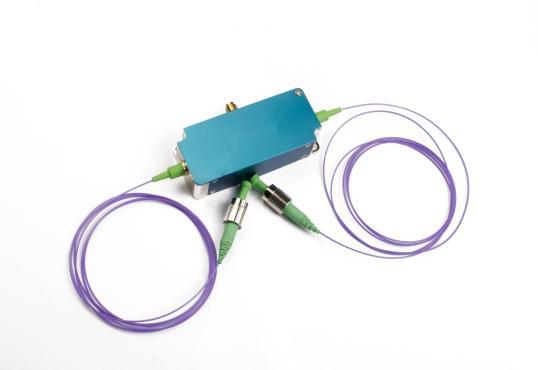
Applications of Acousto Optic Frequency Shifters
AOFS technology finds applications in various areas where precise control over light frequency is crucial:
- Laser Frequency Tuning: AOFS devices can be used to precisely tune the frequency of a laser beam. This capability is essential in applications like spectroscopy, where specific light frequencies are required to probe the properties of materials.
- Heterodyne Detection: AOFS plays a role in heterodyne detection, a technique used to measure the frequency difference between two light beams. By mixing the signal beam with a reference beam shifted by a known frequency using an AOFS, the difference frequency can be easily detected. This technique finds applications in optical communication systems and laser radar (LIDAR).
- Signal Processing: Acousto-optic frequency shifters can be used for various signal processing applications. For instance, in Doppler velocimetry, an AOFS can be used to measure the velocity of objects by analyzing the Doppler shift of light scattered from the moving object. This technique is used in applications like wind speed measurement and traffic monitoring.
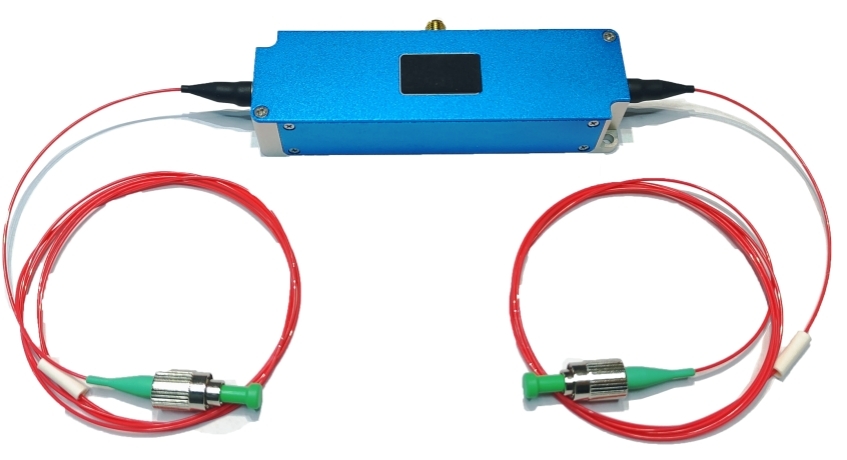
Comparison of Acousto Optic Deflector and Acousto Optic Frequency Shifter
While both acousto optic deflector and AOFS utilize the acousto-optic effect, they differ in their primary functionalities:
- Acousto Optic Deflectors: Primarily focus on manipulating the direction of a light beam through deflection. They offer precise control over the beam’s angular position and can also be used for pulse picking and modulation.
- Acousto Optic Frequency Shifters: Designed specifically for shifting the frequency of a light beam. They leverage the Doppler effect to induce a controlled up-shift or down-shift in the light frequency, finding applications in laser tuning, heterodyne detection, and signal processing.
Here’s a table summarizing the key differences:
| Feature | Acousto-Optic Deflector | Acousto-Optic Frequency Shifter (AOFS) |
| Primary Function | Beam Deflection | Frequency Shifting |
| Manipulation | Direction of light beam | Frequency of light beam |
| Applications | Beam steering, laser scanning, pulse picking, modulation | Laser tuning, heterodyne detection, signal processing (Doppler velocimetry) |
The choice between acousto optic deflector and AOFS depends on the specific application requirement. If the goal is to control the direction of a light beam, then an acousto optic deflector is the ideal choice. However, if manipulating the light frequency is necessary, then an AOFS is the preferred device.
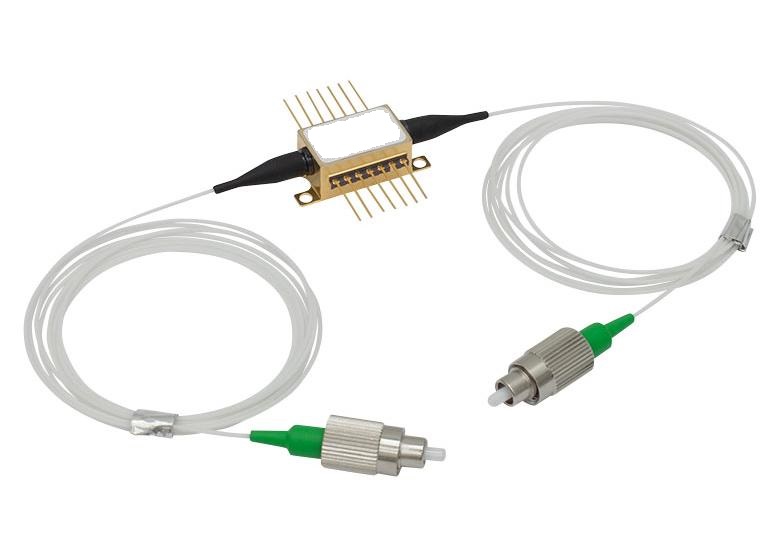
Conclusion
Acousto-optic modulators offer a powerful and versatile tool for manipulating light using sound waves. Acousto-optic deflectors provide precise beam steering, pulse picking, and modulation capabilities, while AOFS enables accurate frequency shifting of light beams. These functionalities cater to diverse applications across various scientific and technological fields. As research and development in acousto-optic technology continue, we can expect even more innovative applications and advancements in the future, leading to further breakthroughs in areas like laser manipulation, optical communication, and high-precision measurement techniques. If you are looking for a fiber AOM supplier, SMART SCI&TECH is a reliable trusted business partner, we are looking forward to your inquiry.

